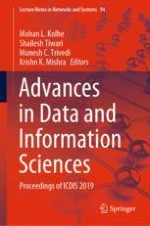2020 | OriginalPaper | Buchkapitel
Impact of Noisy Labels in Learning Techniques: A Survey
verfasst von : Nitika Nigam, Tanima Dutta, Hari Prabhat Gupta
Erschienen in: Advances in Data and Information Sciences
Verlag: Springer Singapore
Aktivieren Sie unsere intelligente Suche, um passende Fachinhalte oder Patente zu finden.
Wählen Sie Textabschnitte aus um mit Künstlicher Intelligenz passenden Patente zu finden. powered by
Markieren Sie Textabschnitte, um KI-gestützt weitere passende Inhalte zu finden. powered by
